Ecological Paradigm – One Community Weekly Progress Update #201
An ecological paradigm is possible if enough people want it. One nonprofit and non-governmental approach to achieving this is open source and free-shared approaches to sustainable food, energy, housing, education, for-profit and non-profit economic design, social architecture, fulfilled living, and global stewardship practices. We call this living and creating for The Highest Good of All.
- Here’s our project overview
- Here’s our world-change methodology
- Here’s how this becomes self-replicating
- Here’s how we are open source and free-sharing all the do-it-yourself designs

OUR MAIN OPEN SOURCE HUBS
Click on each icon to be taken to the corresponding Highest Good hub page.
One Community’s physical location will forward the movement to create an ecological paradigm as the first of many self-replicating teacher/demonstration communities, villages, and cities to be built around the world. This is the January 29th, 2017 edition (#201) of our weekly progress update detailing our team’s development and accomplishments:
Ecological Paradigm
One Community Progress Update #201
Here is the bullet-point list of this last week’s design and progress discussed in detail in the video above:
ECOLOGICAL PARADIGM INTRO: @1:03
ECOLOGICAL PARADIGM HIGHEST GOOD EDUCATION: @2:00
- Transferred all written content for Caring and Kindness Lesson Plan to the website (see below)
- Behind the scenes: completed 100% of the written part of the Diversity Lesson Plan
- Completed second 50% of the mindmap for the Cognition Lesson Plan (see below)
- Recolored all the Highest Good education icons to match the master icon and for video use, and then updated the site (see below)
ECOLOGICAL PARADIGM HIGHEST GOOD FOOD: @2:59
- Edited and added information to the “What Is” and “Overview ” sections of the Food Bars page (see below)
ECOLOGICAL PARADIGM HIGHEST GOOD HOUSING: @3:28
- Ashwini Ramesh and core team put another combined total of 15 hours into the crowdfunding campaign we are developing (see below)
- Created/revised the structural engineering icons in 8 colors for Highest Good housing (see below)
- Created two new Communal Eco-shower Structure renders for the Earthbag Village (see below)
- Adrienne Gould-Choquette finished her 6th week helping create the standardized AutoCAD layers and line-weights template (see below)
- Dean Scholz continued helping us create quality Cob Village renders (see below)
- Adding details to Dean’s previous work, Guy Grossfeld added people and nature elements to create 4 new final renders of the Cob Village (see below)
- Jiming Chen also continued helping develop the Tree House Village (see below)
- Hamilton Mateca finished his 29th week helping with the Compressed Earth Block Village design details (see below)
ECOLOGICAL PARADIGM DUPLICABLE CITY CENTER: @6:06
- Started working on 3D-visualizing the structural support updates for the Cupola that tops the Duplicable City Center (see below)
- Made additional formatting and image changes to the Duplicable City Center component of the 7 villages online book (see below)
- Jinxi Feng continued her research helping us create an in-depth washing machine sustainability analysis (see below)
- Haoxuan “Hayes” Lei and Shuna Ni continued their work on the City Center structural engineering (see below)
- Shubham Agrawal continued his work on the electrical and Control and Automation systems designs for the City Center (see below)
- Jin Yu completed her 2nd week working on the concrete foundation design and tutorial details for the Duplicable City Center (see below)
- Renan Dantas continued with his 6th week working on creating our next generation of Duplicable City Center sections, layout organization, layer updates, and color updates (see below)
ECOLOGICAL PARADIGM HIGHEST GOOD SOCIETY: @8:28
- Finished the One Community aspect of our open source and replicable annual social media strategy (see below)
- Hannah Gibbs completed her 3rd week of helping develop the Taxes and Sustainable Community Building page (see below)
- Ashwin Patil continued with his 15th week developing the new Search Engines for our site (see below)
ECOLOGICAL PARADIGM SUMMARY: @9:08
-
-
- How you can most help us right now and how anyone can help
-
CLICK HERE IF YOU’D LIKE TO RECEIVE AN EMAIL EACH WEEK WHEN WE RELEASE A NEW UPDATE
YOU CAN ALSO JOIN US THROUGH SOCIAL MEDIA
ONE COMMUNITY WEEKLY UPDATE DETAILS
ECOLOGICAL PARADIGM HIGHEST GOOD EDUCATION PROGRESS
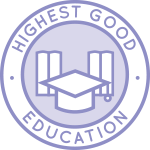 One Community is facilitating a new ecological-paradigm through Highest Good education that is for all ages, applicable in any environment, adaptable to individual needs, far exceeds traditional education standards, and more fun for both the teachers and the students:
One Community is facilitating a new ecological-paradigm through Highest Good education that is for all ages, applicable in any environment, adaptable to individual needs, far exceeds traditional education standards, and more fun for both the teachers and the students:
-
-
- Learn about the components: Education open source hub
- Learn how the components work together: How to use the Education for Life Program
-
This last week the core team transferred all of the written content for the Caring and Kindness Lesson Plan to the website, as you see here. This lesson plan is purposed to teach all subjects, to all learning levels, in any learning environment, using the central theme of “Caring and Kindness”
Behind the scenes, we completed 100% of the written part of the Diversity Lesson Plan.
We also completed the second 50% of the mindmap for the Cognition Lesson Plan, bringing it to 100% complete, which you see here:
And we recolored all the Highest Good education icons to match the master icon and for video use, and then updated the site with them.
ECOLOGICAL PARADIGM HIGHEST GOOD FOOD PROGRESS
 One Community is facilitating a new ecological-paradigm through Highest Good food that is more diverse, more nutritious, locally grown and sustainable, and part of our open source botanical garden model to support and share bio-diversity:
One Community is facilitating a new ecological-paradigm through Highest Good food that is more diverse, more nutritious, locally grown and sustainable, and part of our open source botanical garden model to support and share bio-diversity:
-
-
- Learn about the structures: Hoop House Hub | Aquapini & Walipini Open Source Hub
- See what we’ll be growing: Gardens & Hoop Houses | Large-scale Structures | Food Forest | TA
-
This week, the core team edited and added information to the “What Is” and “Overview ” sections of the Food Bars page, as you see here, bringing the page to approximately 18% completion.
ECOLOGICAL PARADIGM HIGHEST GOOD HOUSING PROGRESS
 One Community is facilitating a new ecological-paradigm through Highest Good housing that is artistic and beautiful, more affordable, more space efficient, lasts longer, DIY buildable, and constructed with healthy and sustainable materials:
One Community is facilitating a new ecological-paradigm through Highest Good housing that is artistic and beautiful, more affordable, more space efficient, lasts longer, DIY buildable, and constructed with healthy and sustainable materials:
-
-
- Learn about: Our Upcoming Crowdfunding Campaign
- Learn about the different village models: 7 Sustainable Village Models
- Visit the open source portals for the first two: Earthbag Village OS Hub | Straw Bale Village OS Hub
-
The core team working with Ashwini Ramesh (Civil Engineer and Project Manager) put another combined total of 15 hours into the crowdfunding campaign we are developing. This week’s focus was behind-the-scenes review and continued writing and editing of the Sustainable Site Selection, Planning and Preparation GoogleDoc that also contains the Site Clearing, Preparation, and Maintenance details. You can see some of this work here.
The core team also created/revised the structural engineering icons in 8 colors for Highest Good housing.
And we created two new Communal Eco-shower Structure renders for the Earthbag Village (Pod 1). Next, we will merge these to create the final render.
Adrienne Gould-Choquette (Mechanical Engineer) also finished her 6th week helping create the standardized AutoCAD layers and line-weights template. This week’s focus was several rounds of integrating the feedback and suggestions from all the other disciplines on our team.
And Dean Scholz (Architectural Designer), continued helping us create quality Cob Village (Pod 3) renders. Here is update 53 of Dean’s work developing renders for the living spaces. This week’s focus was on sections and renders for the 2nd floor sleeping areas of the Southwest wing.
Adding details to Dean’s previous work, Guy Grossfeld (Graphic Designer) added people and nature elements to create this new final render of the Cob Village Front View:
… and this Front View Looking Northwest:
… this Back View Looking East:

Ecological Paradigm – Cob Village Final Render of Back View Looking East – Click to Visit Page
… and this Center View Looking Northeast:
Jiming Chen (Designer with his Master’s in Architecture and BA in Engineering) also continued helping develop the Tree House Village (Pod 7). What you see here is his 11th week of this work focusing on test rendering the entire village you see here with columns as tree placeholders:
…and finishing the plans and running test renders as seen here for the shower and bathroom stand-alone tower structures.
Hamilton Mateca (AutoCAD and Revit Drafter and Designer) also finished his 29th week helping with the Compressed Earth Block Village (Pod 4) design details. This week’s focus was updates to the kitchen renders, creation of accurate outdoor earth block benches, and simplifying the AutoCAD colors and layers.
ECOLOGICAL PARADIGM DUPLICABLE CITY CENTER PROGRESS
 One Community is facilitating a new ecological-paradigm through a Duplicable and Sustainable City Center that is LEED Platinum certified/Sustainable, can feed 200 people at a time, provide laundry for over 300 people, is beautiful, spacious, and saves resources, money, and space:
One Community is facilitating a new ecological-paradigm through a Duplicable and Sustainable City Center that is LEED Platinum certified/Sustainable, can feed 200 people at a time, provide laundry for over 300 people, is beautiful, spacious, and saves resources, money, and space:
-
-
- Learn about this building and it’s function: Duplicable City Center Open Source Hub
-
This week the core team started working on 3D-visualizing the structural support updates for the Cupola that tops the Duplicable City Center. You can see the beginnings of this work here.
We also made additional formatting and image changes to the Duplicable City Center component of the 7 villages online book.
And Jinxi Feng (Environmental Consultant) continued her research helping us create an in-depth washing machine sustainability analysis in route of creating an ecological paradigm. What you see here is her 19th week of behind-the-scenes work on this area of the project. This week’s focus was writing the data analysis content and creating info graphics explaining what’s possible when maximizing sustainability in this area.
Haoxuan “Hayes” Lei (Structural Engineer) and Shuna Ni (Masters of Mechanical Engineering and Civil Engineering PhD) also continued their work on the City Center structural engineering. This week’s focus was roof engineering, fixing stairway conflicts with existing beams, and beginning the process of updating the structural calculations based on commonly available steel members.
Shubham Agrawal (Electrical Engineer) continued his work on the electrical and Control and Automation systems designs for the City Center. What you see here are a couple photos from the weekly collaborative call with Mike Hogan (Automation Systems Developer and Business Systems Consultant) and the new tool Shubham created for calculating solar and battery sizing and needs.
Jin Yu (Structural Engineering Designer) also completed her 2nd week working on the concrete foundation design and tutorial details for the Duplicable City Center. This week’s focus was on the wall footings and basement design details.
And Renan Dantas (Mechanical Engineer) continued with his 6th week working on creating our next generation of Duplicable City Center sections, layout organization, layer updates, and color updates. This week’s focus was modeling the the new dome geometry at each floor level and then applying this to the floor plans.
ECOLOGICAL PARADIGM HIGHEST GOOD SOCIETY PROGRESS
 One Community is facilitating a new ecological-paradigm through a Highest Good society approach to living that is founded on fulfilled living, the study of meeting human needs, Community, and making a difference in the world:
One Community is facilitating a new ecological-paradigm through a Highest Good society approach to living that is founded on fulfilled living, the study of meeting human needs, Community, and making a difference in the world:
-
-
- Read the Highest Good society overview: Highest Good Society
- Learn about the model for fulfilled living and sharing: A Day in the Life
- Learn about the 4 economic models: RBE | For-profit | Non-profit | Entrepreneurship
- Learn about our open source community collaboration and management software: The Highest Good Network
-
This week the core team finished the One Community aspect of our open source and replicable annual social media strategy. You can see a small snapshot of this work here.
Hannah Gibbs (Web Developer) also completed her 3rd week of helping develop the Taxes and Sustainable Community Building page. What you see here are the second round of custom images she’s created that will link to the tax codes for each state.
Ashwin Patil (Web Developer) continued with his 15th week developing the new Search Engines for our site. This week’s work included another round of revisions and updates for the the Highest Good education component and completing version 1.0 of the complete Straw Bale Village search engine.

Continued Work on Search Engine for the Highest Good Education Component & Highest Good Housing – Click to Visit
AND WE PRODUCED THIS WEEKLY UPDATES BLOG – CLICK HERE TO SUBSCRIBE
FOLLOW ONE COMMUNITY’S PROGRESS (click icons for our pages)
INVESTOR PAGES
GET INVOLVED
CONSULTANTS ● WAYS ANYONE CAN HELP ● MEMBERSHIP
CLICK HERE FOR ALL PAST UPDATES
WHAT ONE COMMUNITY IS CREATING
One Community is creating a place to grow together and change the world together. We are creating a space that helps each other live in integrity with each other and the planet as we strive to be the greatest versions of ourselves. We do this by harmoniously respecting each other, nature, and the rest of our one shared planet.
Our goal is to demonstrate what we feel is the most sustainable, healthy, and fun environment we can create. A place based on compassion, kindness, and collaboration. This replicable community will serve as an example for what is possible.
Throughout our design process we are open sourcing and free-sharing everything needed for construction and replication. This includes what we call “Highest Good” approaches to food, energy, housing, education, for-profit and non-profit economics design, social architecture, fulfilled living, stewardship practices and more. We are creating these resources for implementation as individual components or complete developments called teacher/demonstration hubs. These hubs will help launch additional hubs as awareness and knowledge grow.
BUILDING THE FIRST OF MANY
One Community will be the first teacher/demonstration hub. It will function as an experiential-learning model that facilitates mass participation to address humanity’s most pressing challenges through: A replicable model for expansion, building seven self-sufficient village/city prototypes, becoming the world leader in open-source sustainability solutions, and evolving and expanding ALL aspects of sustainable living.
WHY ONE COMMUNITY IS CREATING THIS
The One Community self-replicating model is capable of creating a sustainable planet within 30 years. We will achieve this by establishing successful teacher/demonstration hubs on every continent. Villages include designs appropriate for each of the five main types of climates. They also include options for even the most challenged economies. These hubs will collaborate with one another, share ideas, resources, and work together as a network to heal the planet. They will also transform the global lifestyle to a more enjoyable, fulfilling, healthy, and sustainable one.
The specifics of how One Community is accomplishing this can be found on the One Community Solution Model to Create Solution-creating Models Page. Research supporting and showing the benefits of a model like this can be found on our Research and Resources Articles Archive.
Even if we don’t achieve our ultimate goal of global transformation, a self-replicating teacher/demonstration model like this will take a relatively short period of time to positively affect millions while inspiring millions more. For One Community residents (the Pioneer Team), the idea of creating and sharing the social and recreational experience with visitors is also fun, exciting, fulfilling, and an additional reason why we are creating this.
INSPIRING SUSTAINABILITY WITH OPEN SOURCE
One Community’s four-phase strategy for the creation of solution models that create solution creating models uses open source blueprints for duplication that simultaneously address all aspects of the human experience (food, energy, housing, education, social inequality and injustice, fulfilled living, etc.). We see these areas as interdependent and requiring a comprehensive solution if humanity is to move ecologically, socially, economically, and permanently towards a truly sustainable future for everyone.
Our open source model and blueprints engage and inspire people while simultaneously making sustainable living more affordable and easy to replicate. By free-sharing the step-by-step plans people need for duplication, inviting people to participate, and demonstrating sustainable teacher/demonstration hubs as a more desirable way of living, the model will predictably expand on its own.
It is this approach we see uniting the world through an ecological paradigm and leading to a new Golden Age for humanity. While we understand that not everyone believes this is even possible, we are nonetheless bringing together all those that do see this as possible as the non-profit think tank of forward-thinking individuals willing to design, build, and open source project-launch blueprint and free-share it for The Highest Good of All.
COMPREHENSIVE SOLUTION TO HUMANITY’S NEEDS
One Community is open source sharing an evolution of sustainable living that addresses the complete human experience. We are doing this because we see the solutions for global food, housing, energy, education, social inequality, ethical business practices, earth regenerative practices, and a desire for a more fulfilling living experience as inseparably interconnected. As a comprehensive solution, we are addressing all these areas simultaneously and open source free-sharing everything needed for individual duplication and/or duplication as complete self-replicating teacher/demonstration communities, villages, and cities to be built around the world.
As we address and open source share these areas we will establish a living example of the first teacher/demonstration village purposed to teach others and create an ecological paradigm. To maximally facilitate duplication, One Community will provide seven duplicable examples and function indefinitely as a place people can visit and a non-profit and open source think tank continuing to further evolve and share solutions in all of the above areas and more. We will also provide hands-on experience and training. Most importantly, growing upon our sustainable foundation, we will endlessly make this comprehensive solution even more widely known and globally accessible, understandable and diversely duplicable, and inspiring and desirable as a model worth duplicating.
 One Community
One Community











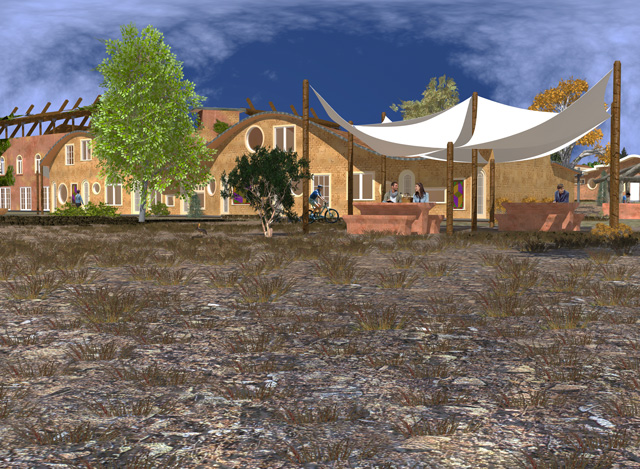

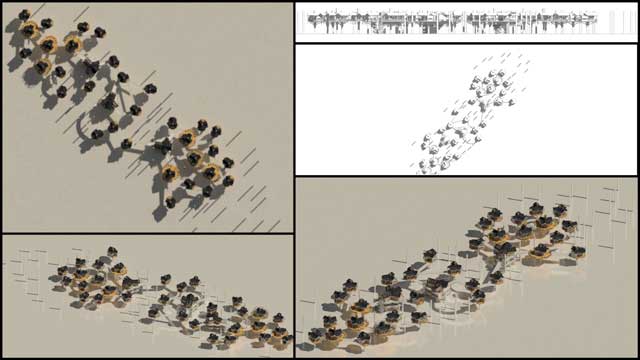



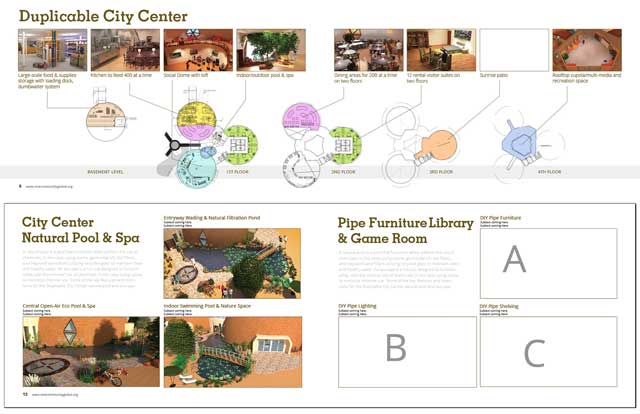
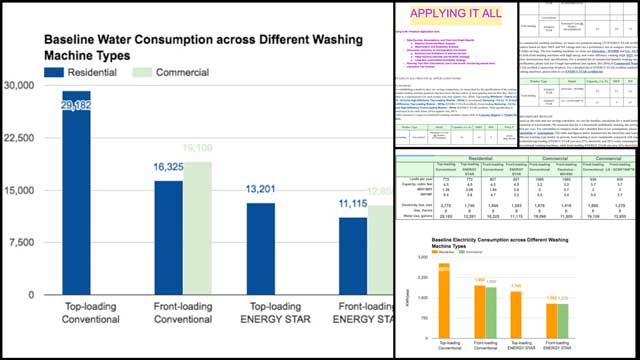





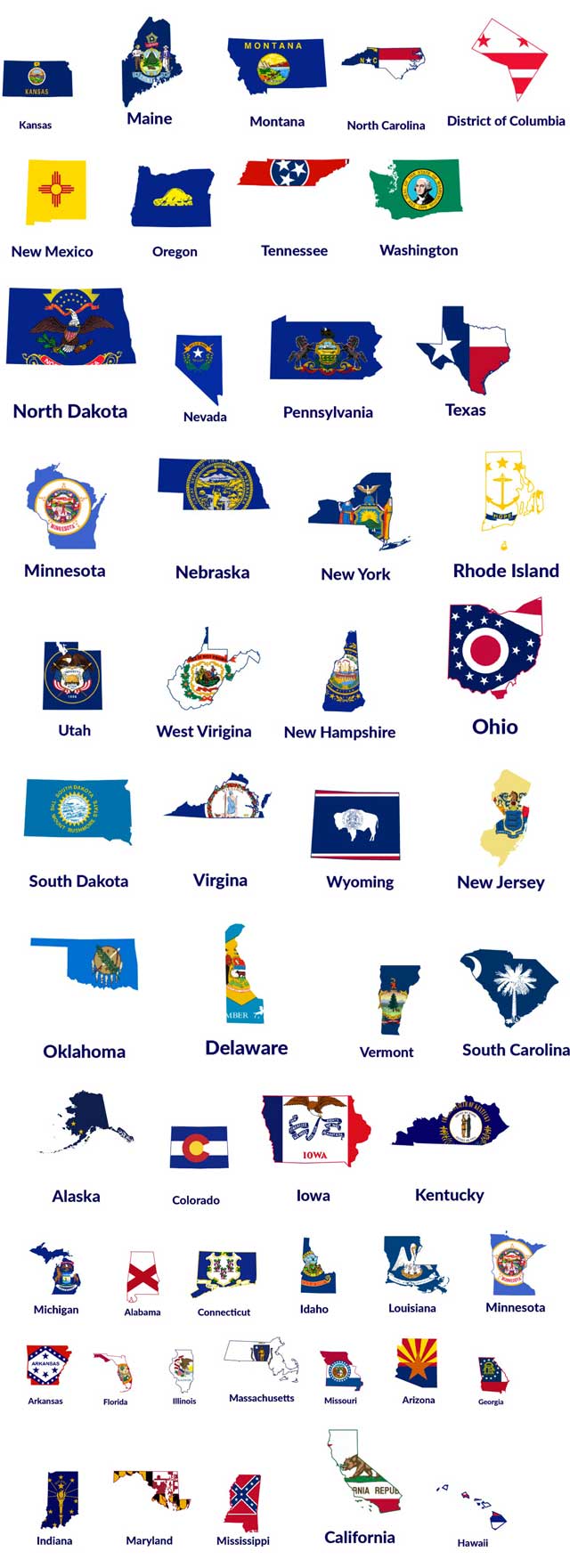
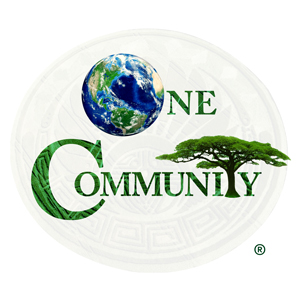


Connect with One Community